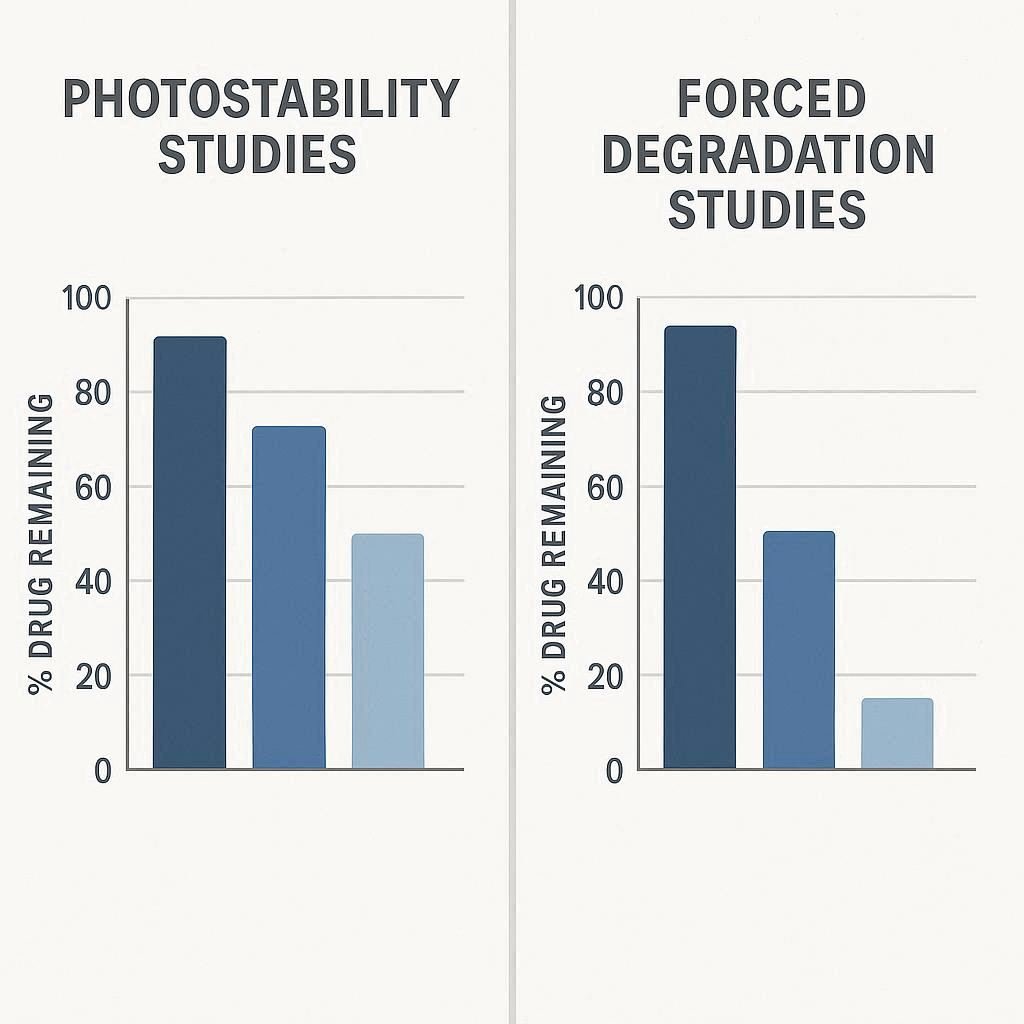
Photostability and forced degradation studies are stress-testing methods used in drug development to understand degradation pathways. Forced degradation uses extreme conditions (e.g., heat, pH, oxidation, light) to identify all potential degradation products and support stability-indicating method development. Photostability, a specific subset, focuses solely on light exposure to assess photosensitivity and determine the need for light-protective […]
Photostability and forced degradation studies are stress-testing methods used in drug development to understand degradation pathways. Forced degradation uses extreme conditions (e.g., heat, pH, oxidation, light) to identify all potential degradation products and support stability-indicating method development. Photostability, a specific subset, focuses solely on light exposure to assess photosensitivity and determine the need for light-protective packaging.
| Aspect | Photostability Studies | Forced Degradation Studies |
|---|---|---|
| Purpose | To assess stability under light exposure. | To assess stability under extreme conditions (heat, humidity, oxidation). |
| Conditions Simulated | Exposure to UV or visible light. | Exposure to extreme conditions such as heat, humidity, oxidation, and pH variations. |
| Key Focus | Light-induced degradation and its impact on the drug. | Degradation pathways and by-products under harsh conditions. |
| Regulatory Requirement | Required by agencies like ICH for light-sensitive products. | Required by agencies to assess stability and degradation pathways. |
| Common Methods | UV light exposure, simulated sunlight, controlled light conditions. | Exposure to heat, humidity, acid/base, and oxidation stress. |
| Results | Identifies light-sensitive compounds and evaluates degradation products. | Identifies degradation pathways and stability under stress conditions. |
| Duration | Typically short exposure (hours to days). | Typically longer exposure (days to weeks). |
| Use in Formulation Development | Helps in designing packaging and storage solutions (e.g., UV protection). | Helps in improving formulation stability through stress testing. |
| Impact on Product Shelf-Life | Assesses behavior when exposed to light over time. | Provides insights into shelf-life based on stress conditions. |
| Guidelines/Test Protocols | ICH Q1B guidelines, ASTM G-173 for sunlight simulation. | ICH Q1A guidelines, various accelerated stress test protocols. |
You May Like
Photostability studies assess how a drug or formulation reacts to light exposure, particularly UV or visible light, to identify light-induced degradation.
Forced degradation studies expose the drug to extreme conditions (e.g., heat, humidity, oxidation) to accelerate degradation and determine its stability under stress.
These studies are performed to understand how a drug will degrade under different conditions and to ensure its safety, efficacy, and stability throughout its shelf life.
An example is testing a drug like Vitamin C (ascorbic acid), which is highly sensitive to light and degrades under exposure, affecting its potency and effectiveness.
An example is testing a drug like acetaminophen under high heat or acidic conditions to identify potential degradation products and improve formulation stability.
These studies help design packaging, select appropriate excipients, optimize formulation stability, and predict shelf life. They also help comply with regulatory guidelines (e.g., ICH).
Photostability refers to the ability of a drug or pharmaceutical product to maintain its chemical integrity and potency when exposed to light, especially UV or visible light.
Forced degradation studies involve deliberately stressing a drug under conditions like high temperature, humidity, or oxidation to accelerate degradation and assess its stability and degradation pathways.
Further Reading
Quick Links